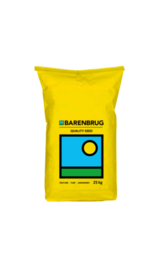Sericea lespedeza is a drought-tolerant, non-bloating perennial legume; it is resistant to diseases and is rarely attacked by insects; and mature plants are quite competitive with grasses. It is much more tolerant of soil acidity than most other legumes and is also very tolerant of low fertility. Forage yields of sericea are good, and forage quality is better than most warm season perennial grasses.
It is a surprisingly economical forage crop to grow due to the fact that it does not require any nitrogen fertilizer, It has also been well documented that sericea is an excellent soil builder. Lespedeza will grow on almost any soil. It does well on sandy and loam-type soils. Sericea is a deep-rooted perennial that also does well on shallow soils with drainage restrictions. Lespedeza will tolerate lower pH (more acid) soils than clover. Sericea lespedeza is normally planted in mid-summer.
This plant has poor seedling vigour and thus is normally planted in pure stands. However, where adapted, a cool season perennial grass such as tall fescue can be drilled into established sericea with high probability of obtaining a mixed sericea/grass stand. It is imperative to inoculate seed, since this bacterial culture enables the lespedeza plant to make its own nitrogen. Use a strain of inoculum recommended for lespedeza. Properly inoculated lespedeza will need no nitrogen application. The earlier the planting date the better.



